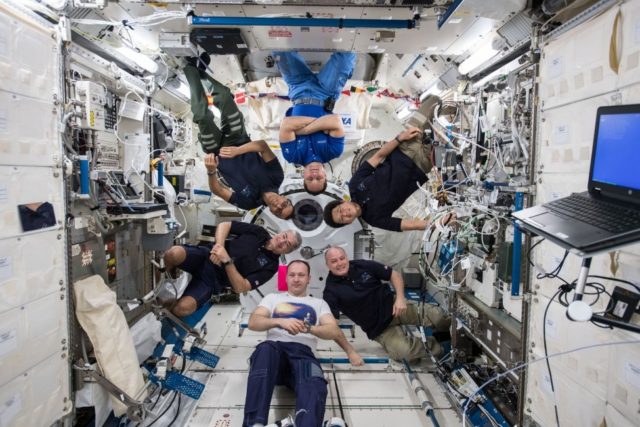Sept. 4 (UPI) — Long-term space travel can have a variety of effects on the physiology of astronauts. New research suggests prolonged exposure to microgravity does cause parts of the brain to reorganize itself, but does not trigger neurodegeneration, the loss of brain tissue.
For the new study, published Friday in the journal Science Advances, researchers imaged the brains of 11 male cosmonauts from Russia who spent an average of roughly six months in space. Seven months later, the team followed up with a second round of imaging.
“This specific type of MRI we used, diffusion MRI, operates by acquiring 153 brain scans for each session, rather than just one brain scan,” lead researcher Steven Jillings, doctoral student at the University of Antwerp, told UPI in an email. “Each of these 153 scans have slightly different parameters.”
By tweaking one parameter called the b value, scientists can effectively lower the signal on the MRI. This signal decay, can help scientists identify different types of brain tissue, including gray matter, white matter and cerebrospinal fluid.
This novel imaging technique allowed researchers to assess the effects of spaceflight on tissue microstructures in the brain. Researchers calculated relative amounts of each of the three main brain tissue types in each voxel of the brain scans.
“A voxel for MRI is like the pixel for a picture,” Jillings said.
The analysis showed that while prolonged exposure to microgravity can alter the positioning of the brain and the distribution of tissue, brain tissue is not lost or destroyed.
The images confirmed what other studies have demonstrated — that the brain reorganizes itself in response to microgravity.
“We started this study to investigate whether neuroplasticity occurs as a result of spaceflight,” Jillings said. “Neuroplasticity is the ability of the brain to adapt to new situations and environments. This is also exactly what we found, namely neuroplasticity in motor regions of the brain.”
Scientists suspect the slight changes in the ratios of white and gray matter in different parts of the motor cortex are the result of astronauts learning to move around in a weightless environment.
Researchers also measure changes in the amounts of cerebrospinal fluid surrounding the brain.
“We saw a decrease over the top half of the brain and an increase along the base or lower half of the brain,” Jillings said. “This is something that has been shown in previous studies as well and points toward a redistribution of the fluid within the skull as a result of weightlessness. None of our findings are associated with cognitive function.”
Researchers found that some, but not all, of the shifts in brain tissue ratios and cerebrospinal fluid distribution had returned to normal after seven months back on Earth.
In followup studies, scientists plan to investigate whether age, mission duration and previous experience in space influence structural changes in an astronaut’s brain.
“Many open questions remain, because there have been so few studies looking at the effects of spaceflight on the brain,” Jillings said. “Some of the most important ones are whether accumulative time in space — either longer mission durations or multiple missions to space — also causes accumulative effects.”

COMMENTS
Please let us know if you're having issues with commenting.